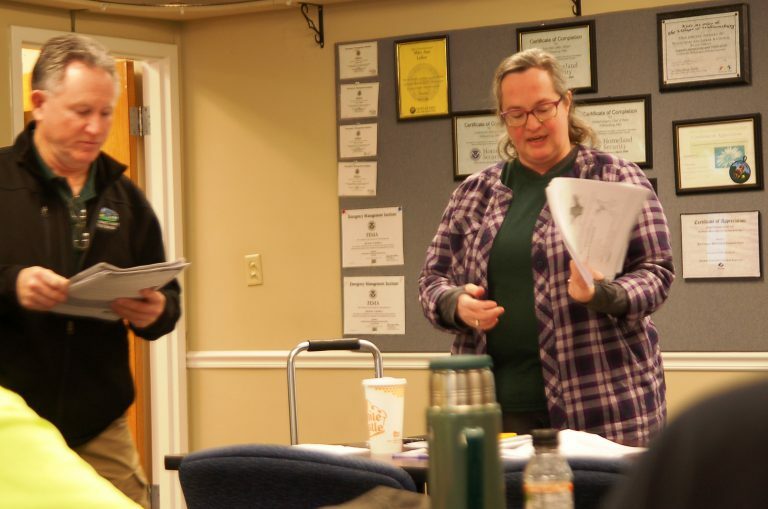Pruning young trees

WILLIAMSBURG – The program dealt with pruning young trees, but the conversation turned to donuts.
Wendi Van Buren – Regional Urban Forester with the Ohio Department of Natural Resources – spoke about the importance of donuts during a workshop presented by the Clermont County Parks Association Jan. 30.
Yes, she mentioned the pastries given the fact it was a morning meeting. More importantly, she said donuts serve as visual evidence of good pruning work. When making a proper cut, trees regenerate in the shape of a donut to repair the damaged area.
“When you go back and look at your cuts a year later, that will tell you if you’ve done good work,” she said. “You should always have donuts on your pruning cuts after a year.”
Van Buren said pruning – which she called “the art and science of removing tree parts for a specific purpose” – generally benefits people more than the trees.
“Why do we prune,” she asked. “We don’t do it for the trees. We do it so the trees do something for us. We prune so they make clearances so people or vehicles can get under them, to keep them from dropping branches on our guests, for beautification. There are a lot of reasons.”
The process is addition by subtraction.
“Every cut damages the tree in some way,” Van Buren said. “But if you do it right, you minimize the damage and the tree can continue to thrive. Bad cuts can seriously injure a tree and over time bad cuts will kill them.”
She said pruning juvenile trees (ages three to 15 years) offers the most benefit.
“Our inclination is to plant the trees and ignore them,” Van Buren said. “You don’t have to prune, but if you ignore them, you risk not paying attention until problems is huge and expensive.
“If you prune a young tree, you can condition it to grow in a healthy way that won’t cause trouble in the long run.”
“This is the kind of program that benefits more than the Park District or our villages and townships who have parks,” said Tim Carr, Clermont County Park District Deputy Director. “We had private arborists attend and get continuing education credits.
“The bottom line is we’re working with the CCPA to bring expert information and best practices into Clermont County to benefit the whole community. We look forward to our next seminar a little later this year when we talk about invasive species removal.”

